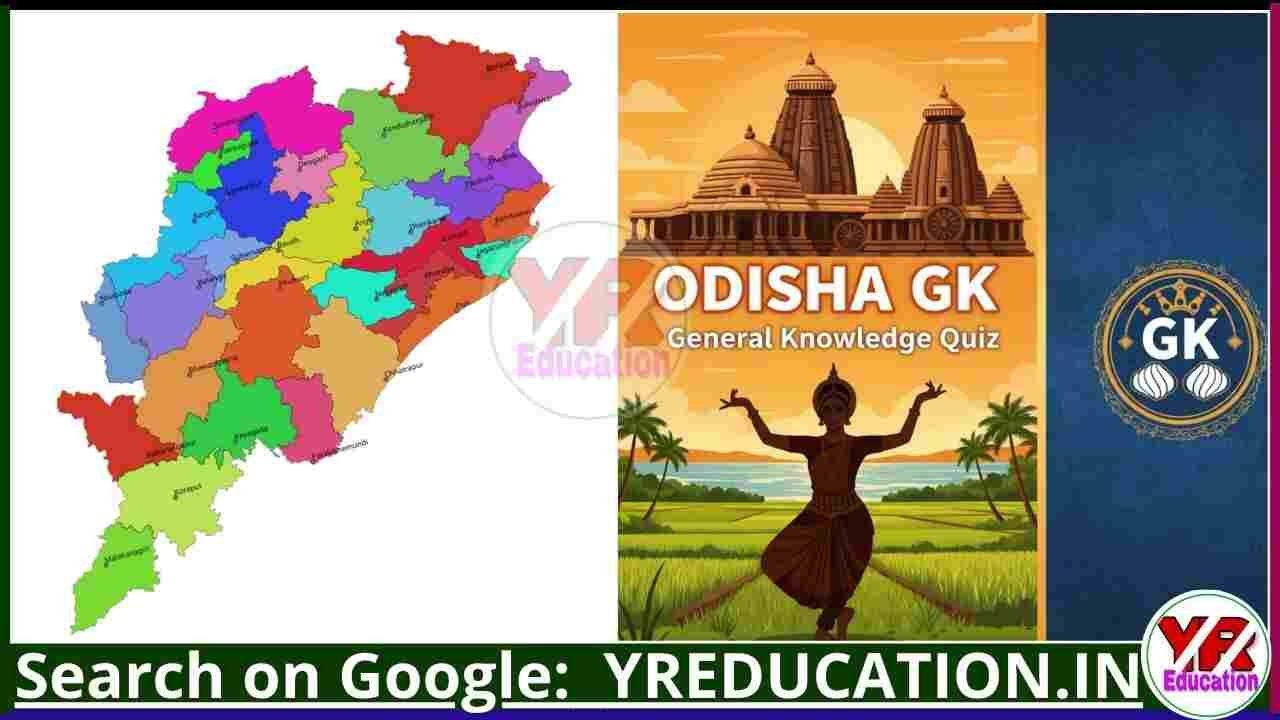Odisha Geography – General Knowledge – Static GK
Q: Madhusudan Das was the first Odia to become a member of the Central Legislative Assembly.
Q: Odisha became a separate state on April 1, 1936 due to the efforts of Utkal Sammilani.
Q: The first capital of Odisha after becoming a separate state was Cuttack.
Q: Krushna Chandra Gajapati Narayan Deo, the king of Paralakhemundi, played a key role in Odisha’s formation.
Q: The first Governor of Odisha was Sir John Austin Hubbak.
Q: The Quit India Movement (1942) in Odisha saw massive participation, including women and tribal groups.
Q: The 1942 Dharmapada revolt was a major peasant movement against the British in Odisha.
Q: The Jhankar Movement (1930s) focused on the social upliftment of lower castes in Odisha.
Q: Jayee Rajguru was the first martyr of Odisha’s freedom struggle.
Q: Veer Surendra Sai continued his fight against the British even after being imprisoned for 37 years.
Q: Gopabandhu Das was known as the ‘Utkal Mani’ (Jewel of Odisha).
Q: Fakir Mohan Senapati is credited with reviving the Odia language.
Q: Radhanath Ray is considered the father of modern Odia poetry.
Q: Pandit Nilakantha Das was a major contributor to Odia literature and education.
Q: Gangadhar Meher was known as the ‘Swan Poet of Odisha’.
Q: Sarala Devi was a prominent female leader of Odisha’s freedom movement.
Q: Biju Patnaik, an independence activist and later CM, played a crucial role in India’s freedom struggle.
Q: Dr. Harekrushna Mahatab, the first Chief Minister of Odisha, was known as the ‘Utkal Keshari’ (Lion of Odisha).
Q: The Jagannath Temple of Puri was built by Anantavarman Chodaganga Deva of the Eastern Ganga dynasty.
Q: The Sun Temple at Konark is designed in the shape of a chariot of the Sun God.
Q: The Mukteshwar Temple in Bhubaneswar is known as the ‘Gem of Odisha Architecture’.
Q: The Lingaraja Temple represents a blend of Kalinga and Dravidian architecture.
Q: The Rajarani Temple is famous for its sculptural beauty and erotic carvings.
Q: The Jagannath Temple’s kitchen is considered the largest temple kitchen in the world.
Q: The Ananta Vasudeva Temple in Bhubaneswar is one of the few temples in Odisha dedicated to Lord Vishnu.
Q: The Vaital Deula Temple follows the Khakara style of architecture.
Q: Biraja Temple in Jajpur is dedicated to Goddess Durga (Biraja Devi).
Q: The Chausathi Yogini Temple in Hirapur is dedicated to 64 forms of Goddess Shakti.
Q: Odisha is home to 62 tribal communities, the highest in India.
Q: The Kondh tribe is known for its ancient human sacrifice rituals (Meriah).
Q: The Santal tribe is the largest tribal group in Odisha.
Q: The Bonda tribe lives in the Malkangiri district and is one of India’s most primitive tribes.
Q: Dhap dance is performed by the Gond and Kandha tribes.
Q: The Dalkhai dance is a famous folk dance of Western Odisha.
Q: The Chhau Dance of Mayurbhanj is recognized by UNESCO as an Intangible Cultural Heritage.
Q: The Sambalpuri dance is performed during Nuakhai festival.
Q: The Muria tribe is known for its Gotul (youth dormitory) system.
Q: The Saora tribe is famous for its Saora paintings (also called Idital).







